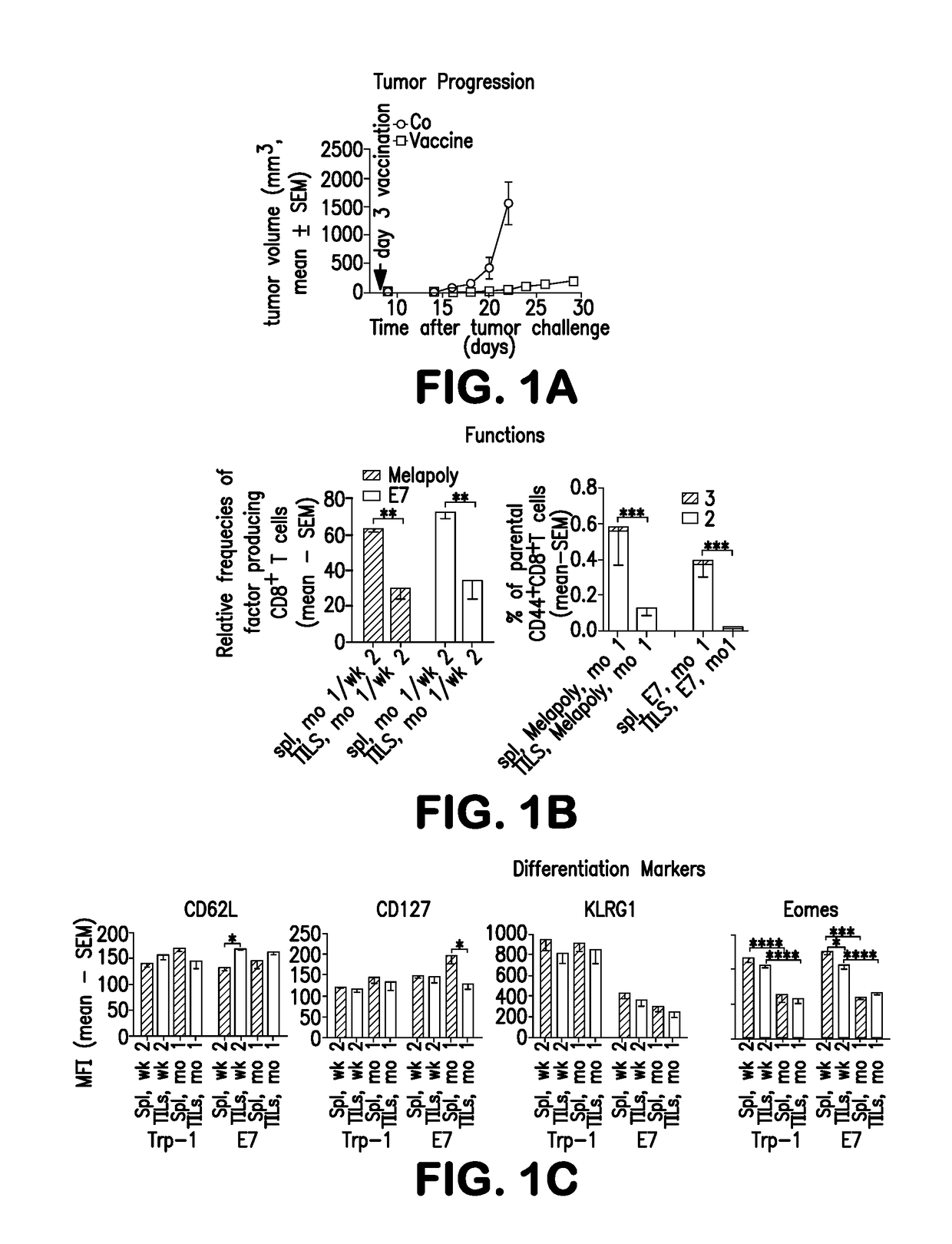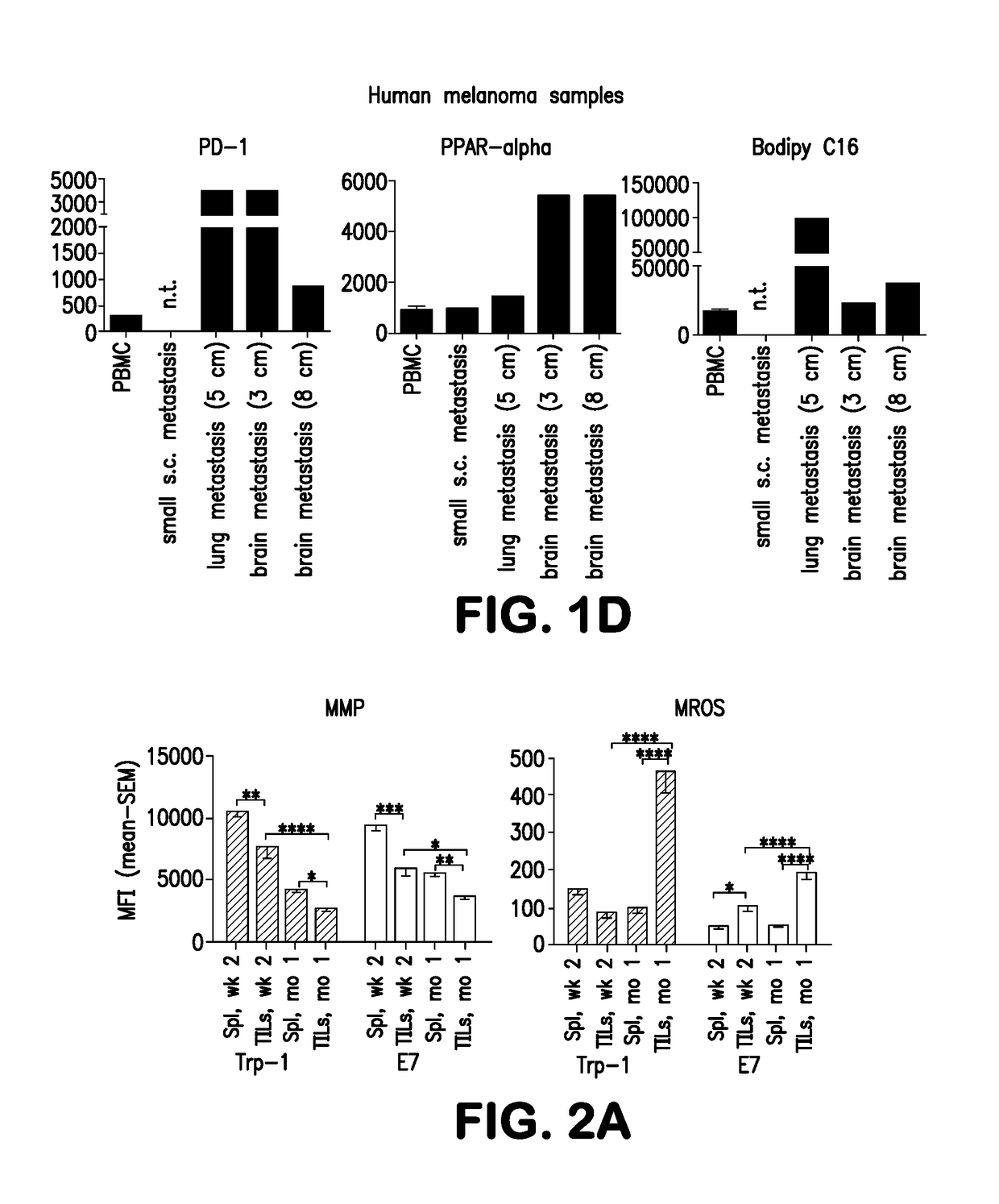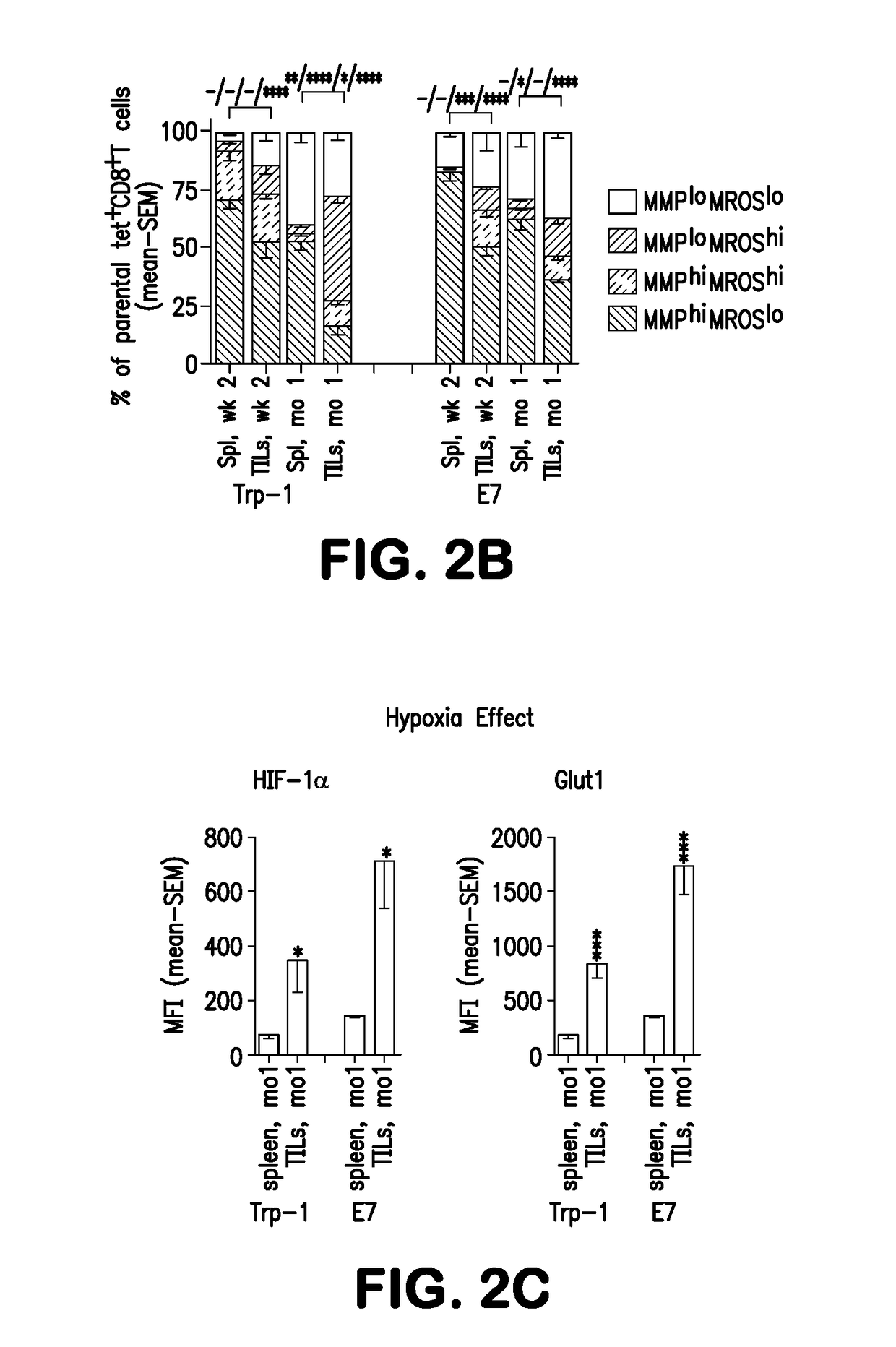Methods and compositions for treating cancer
a technology of compositions and cancer, applied in the field of methods and compositions for treating cancer, can solve the problems of failure of active ineffective traditional vaccines that aim to induce such t cells, and damage the efficacy of immunotherapy for solid tumors, so as to enhance the immune function of the t cell(s), promote the use of fatty acid catabolism, and enhance the survival of the t cell.
- Summary
- Abstract
- Description
- Claims
- Application Information
AI Technical Summary
Benefits of technology
Problems solved by technology
Method used
Image
Examples
example 1
and Methods
[0210]Cell Lines and Construction of Recombinant Adenovirus and Lentivectors.
[0211]The B16 cell line and the vaccines have been described previously.40,15 The B16BrafV600E cell line (kindly provided by Dr. M Herlyn, Wistar Institute, Philadelphia, Pa.) was derived from B16.F10 cells by transduction with the lentivector pLU-EF1a-mCherry expressing mouse BrafV600E. HEK 293 cells were used to propagate vaccine vectors. Cells were grown in Dulbecco's modified eagles medium (DMEM) supplemented with 10% fetal bovine serum (FBS).
[0212]Molecular construction, rescue, purification and titration of AdC68-gDMelapoly and AdC68-gDE7 vectors have been described40. The Melapoly transgene sequence (see FIG. 7 of U.S. Pat. No. 9,402,888) is composed of an ER signal sequence (ER ss) followed by a pan DR epitope (PADRE), three CD4+T cell epitopes from human (h) Trp-2, and eight CD8+T cell epitopes from human (h) or mouse (m)Trp-2, mTrp-1, hgp100 and mBrafV600E fused into herpes simplex viru...
example 2
ls Become Functionally Impaired within the TME Independent of Recognition of their Cognate Antigen
[0262]To test if the fate of CD8+TILs depends on continued antigen recognition, we used two vaccines in a transplantable mouse melanoma model. One, termed AdC68gD-Melapoly40 is an adenovirus (Ad)-based polyepitope vaccine that elicits MAA-specific CD8+T cell responses, mainly to the Trp-1455-463 epitope; the other, termed AdC68-gDE715, stimulates CD8+T cells to E7.
[0263]We vaccinated mice bearing 3-day old B16BrafV600E tumors and normal mice with AdC68-gDMelapoly mixed with AdC68-gDE7. Vaccination delays tumor progression (FIG. 1A). Experiments indicating the numbers of tetramer (tet)+ Trp-1- and E7-specific CD8+T cells / 106 live cells in spleens (Spl) and tumors of mice that had or had not been challenged with tumor cells 3 days (d) before vaccination (n=7-10 / group), revealed that both Trp-1 and E7-specific CD8+T cells accumulate within tumors where they contract more rapidly in TME tha...
example 3
hrough HIF-1a Increases Lag-3 Expression and Reduces T Cell Functions
[0270]Trp-1- and E7-specific CD8+TILs are progressively subjected to hypoxia during tumor progression as shown by their enhanced expressions of HIF-1α, a transcription factor that stabilizes under hypoxia, and its downstream target Glut1, which facilitates Glu uptake, in / on vaccine-induced CD8+TILs from 1-month (FIG. 2C), but not small 2-week tumors (data not shown).
[0271]To determine how hypoxia affects CD8+T cells, we stimulated enriched, activated CD8+ T cells in vitro continuously for 96 hours under normoxia (21% O2) or for the last 16 hours under hypoxia (1% O2) Hypoxia reduces blast formation (FIG. 8A) and increases expression of HIF-1α and Glut1 (FIG. 8B). The O2 consumption rate (OCR), a measure of OXPHOS, decreases under hypoxia while the extracellular acidification rate (ECAR), a measure of glycolysis, increases (FIG. 8C). The T cells' MMP decreases and MROS increases, leading to a rise in the proportion ...
PUM
| Property | Measurement | Unit |
|---|---|---|
| Time | aaaaa | aaaaa |
| Molar density | aaaaa | aaaaa |
| Molar density | aaaaa | aaaaa |
Abstract
Description
Claims
Application Information
 Login to View More
Login to View More - R&D
- Intellectual Property
- Life Sciences
- Materials
- Tech Scout
- Unparalleled Data Quality
- Higher Quality Content
- 60% Fewer Hallucinations
Browse by: Latest US Patents, China's latest patents, Technical Efficacy Thesaurus, Application Domain, Technology Topic, Popular Technical Reports.
© 2025 PatSnap. All rights reserved.Legal|Privacy policy|Modern Slavery Act Transparency Statement|Sitemap|About US| Contact US: help@patsnap.com



